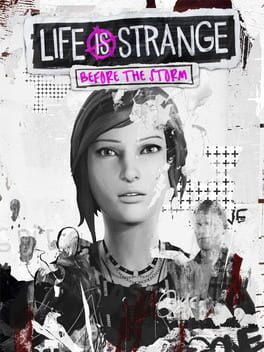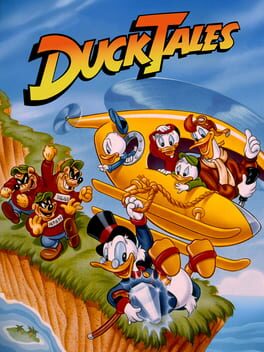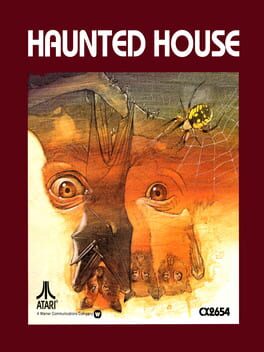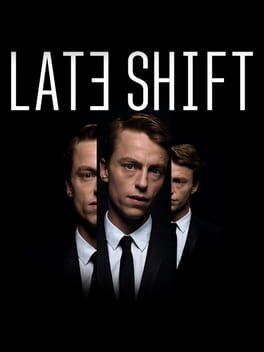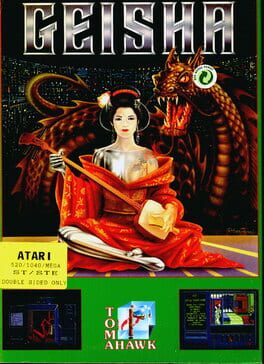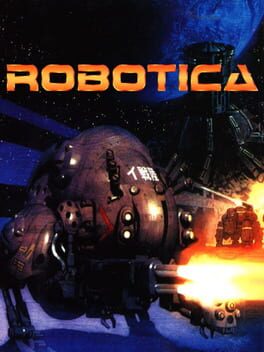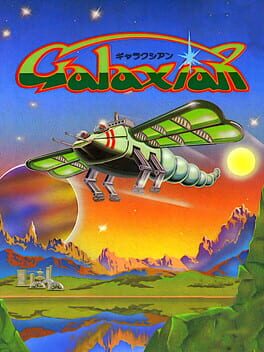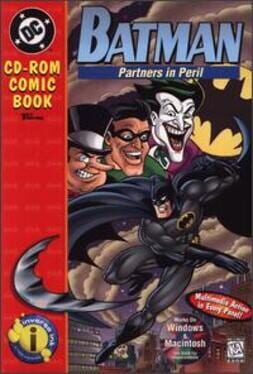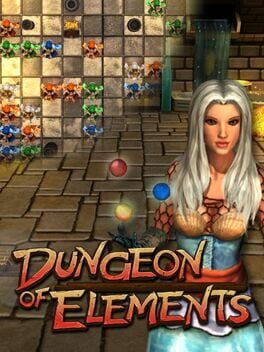ANerdList
1993
2006
It's actually kind of surprising just how much I loved this game. It's legitimately one of my all-time favorites now. I swear, the original GameBoy game designers were just absolute mad lads run rampant on whatever fever dream ideas they had on any given day. Bonkers game. And it's all the better for that.
Plus, the debut of Wario. What more can you ask for?
Plus, the debut of Wario. What more can you ask for?
1989
It's a decent enough platformer with a fun jump mechanic designed to help little kids get through the game more easily. Fun levels and a neat art style. But I don't really understand its "all-time classic" status in the minds of so many. Aside from nostalgia associated with it for those who played it as children, I don't see a reason for the unending praise. It's fun, but there's nothing particularly special about it.
2019
Looking at the raw ingredients, Song of Horror has all the makings of a modern masterpiece: genuinely spooky atmosphere, inventive and memorable scares, gorgeous graphics, gameplay variety, and a story that isn't half bad and helps build the lore and add to the scariness of the world.
Why, then, am I giving it a 4/5 and not a 4.5/5 or higher? Well, for a few key reasons.
The biggest problem I have with the game is how it handles its gimmick of permadeath. And yes, I say "gimmick," because that's exactly what it ends up amounting to in how the game implements it. You see, the ultimate ending of the game isn't affected by which characters live or die by the end. The story marches on, with minimal change and absolutely no alteration of outcome, regardless of whether the player keeps all of the playable characters alive, a certain number alive, or all but one alive. This is because the main character of the game, Daniel, cannot die. He has to make it to the end of the game because the story only has one ending. Therefore, if you "die" while playing as Daniel, you get to try again, and permadeath doesn't apply.
So, why in the world would anyone ever play as any of the other characters on offer? Well, the game actually does reward players for switching it up and revisiting the same areas as different characters in the form of the gameplay experience itself. Depending on the character's background, they might be able to, say, disable an alarm before it goes off, or enter a certain area of a map early, or have a unique reaction to a discovery if the contents are specifically harrowing to them. And these small differences do, in theory, give the game a lot of variety and replay value.
But this is where the game's biggest shortcoming lies. It is trying to be two counterintuitive things at once. On the one hand, the game is full of puzzles (which are great, by the way), collectables, opportunities for exploration, and unique character experiences. But on the other hand, that permadeath feature ends up discouraging the player from even bothering to explore much of the game's offered variety. This is due to the aggravation of suffering instant kills for merely clicking on a pathway that often has no indication of danger prior. It's a complete crapshoot on whether turning a certain corner or picking up a certain item will result in the character's sudden and permanent demise. Suffering such consequences for an honest mistake that I was fully warned of ahead of time and can only blame myself for is one thing; being taken out by a cheap shot because the game just wants to screw with me in the service of cheap scares is another.
The other big problem I have, which again ties into the permadeath feature, is how unintuitive and poorly explained the QTE sequences are in this game. I don't hate QTE, and depending on the type of game is using them, they are sometimes the only real player agency on offer. And I'm fine with that in the right context. I enjoy "experience games," "walking simulators," and interactive movies, and in games of those types, QTEs are common. But the best among those games also make such sequences incredibly straightforward to understand and follow. This game does not. Most of these QTE "mini-games" give a brief (and poor) instruction one time, then leave it to the player to figure it out from then on. And these instructions often do not accurately explain what the player is actually supposed to do.
For example: one of these mini-games require the player to hide somewhere while being pursued by an enemy, and while hidden, the player must, according to the on-screen instructions, "match the character's heartbeat" by pressing a certain button. But that's not actually the full story. You can't simply "match the heartbeat" by timing the button press to the sound of the beats. Instead, you must match the visual that pops up on the screen of a white circle growing and shrinking. You have to press the button when the circle is at its smallest aperture. And this visual sometimes doesn't line up perfectly with the sound of the heartbeat. Oftentimes, it follows its own pattern and rhythm, and so, I often found myself having to fight my natural instinct to match the sound of the heartbeat and focus only on the sometimes counterintuitive visual cues. As one might imagine, I wasn't always successful at this.
And remember: you only get one shot at these things. If you fail them once, your character is dead. For the rest of the game.
Unless you play as Daniel, and then you simply restart the stage you're currently on.
This sloppy approach at creating tension and a sense of danger through shoddy mechanics rather than atmosphere and true challenge is the most aggravating thing about this game for me. Primarily because the game does not need these weaker elements in order to be successfully scary. So many other things that are part of the game not only work, but they work brilliantly. Every time a ghost appears out of nowhere in the room with you, or you catch a glimpse of shadowy figures moving in the background, or you hear a noise in the darkness, the game succeeds at creating a very real sense of danger and dread. It doesn't need the threat of permanent death of a character, or clumsy QTEs going wrong, in order to keep the player on edge. Those added elements simply serve to drag the game experience down and hobble it. Furthermore, the game's insistence on keeping the Daniel character alive to the end only encourages players to always play Daniel and discourages them from experimenting with other characters. I mean, why would they when they can avoid the nonsense by just playing as the character who is allowed multiple attempts at clearing these unfair and poorly implemented hurdles?
I should note that you can play any character you want and avoid permadeath, but if you do so, the game will not let you unlock the higher difficulty for multiple playthroughs. Essentially, the game punishes you for playing it "the wrong way," despite making that way an officially offered feature. Just absolutely baffling.
Despite the flaws, I genuinely love the game's atmosphere. And for that reason alone, I can't give it anything lower than 4/5. But it was so close to being a 4.5/5 or a 5/5 that it aggravates me to see them get it so wrong in such avoidable ways.
Why, then, am I giving it a 4/5 and not a 4.5/5 or higher? Well, for a few key reasons.
The biggest problem I have with the game is how it handles its gimmick of permadeath. And yes, I say "gimmick," because that's exactly what it ends up amounting to in how the game implements it. You see, the ultimate ending of the game isn't affected by which characters live or die by the end. The story marches on, with minimal change and absolutely no alteration of outcome, regardless of whether the player keeps all of the playable characters alive, a certain number alive, or all but one alive. This is because the main character of the game, Daniel, cannot die. He has to make it to the end of the game because the story only has one ending. Therefore, if you "die" while playing as Daniel, you get to try again, and permadeath doesn't apply.
So, why in the world would anyone ever play as any of the other characters on offer? Well, the game actually does reward players for switching it up and revisiting the same areas as different characters in the form of the gameplay experience itself. Depending on the character's background, they might be able to, say, disable an alarm before it goes off, or enter a certain area of a map early, or have a unique reaction to a discovery if the contents are specifically harrowing to them. And these small differences do, in theory, give the game a lot of variety and replay value.
But this is where the game's biggest shortcoming lies. It is trying to be two counterintuitive things at once. On the one hand, the game is full of puzzles (which are great, by the way), collectables, opportunities for exploration, and unique character experiences. But on the other hand, that permadeath feature ends up discouraging the player from even bothering to explore much of the game's offered variety. This is due to the aggravation of suffering instant kills for merely clicking on a pathway that often has no indication of danger prior. It's a complete crapshoot on whether turning a certain corner or picking up a certain item will result in the character's sudden and permanent demise. Suffering such consequences for an honest mistake that I was fully warned of ahead of time and can only blame myself for is one thing; being taken out by a cheap shot because the game just wants to screw with me in the service of cheap scares is another.
The other big problem I have, which again ties into the permadeath feature, is how unintuitive and poorly explained the QTE sequences are in this game. I don't hate QTE, and depending on the type of game is using them, they are sometimes the only real player agency on offer. And I'm fine with that in the right context. I enjoy "experience games," "walking simulators," and interactive movies, and in games of those types, QTEs are common. But the best among those games also make such sequences incredibly straightforward to understand and follow. This game does not. Most of these QTE "mini-games" give a brief (and poor) instruction one time, then leave it to the player to figure it out from then on. And these instructions often do not accurately explain what the player is actually supposed to do.
For example: one of these mini-games require the player to hide somewhere while being pursued by an enemy, and while hidden, the player must, according to the on-screen instructions, "match the character's heartbeat" by pressing a certain button. But that's not actually the full story. You can't simply "match the heartbeat" by timing the button press to the sound of the beats. Instead, you must match the visual that pops up on the screen of a white circle growing and shrinking. You have to press the button when the circle is at its smallest aperture. And this visual sometimes doesn't line up perfectly with the sound of the heartbeat. Oftentimes, it follows its own pattern and rhythm, and so, I often found myself having to fight my natural instinct to match the sound of the heartbeat and focus only on the sometimes counterintuitive visual cues. As one might imagine, I wasn't always successful at this.
And remember: you only get one shot at these things. If you fail them once, your character is dead. For the rest of the game.
Unless you play as Daniel, and then you simply restart the stage you're currently on.
This sloppy approach at creating tension and a sense of danger through shoddy mechanics rather than atmosphere and true challenge is the most aggravating thing about this game for me. Primarily because the game does not need these weaker elements in order to be successfully scary. So many other things that are part of the game not only work, but they work brilliantly. Every time a ghost appears out of nowhere in the room with you, or you catch a glimpse of shadowy figures moving in the background, or you hear a noise in the darkness, the game succeeds at creating a very real sense of danger and dread. It doesn't need the threat of permanent death of a character, or clumsy QTEs going wrong, in order to keep the player on edge. Those added elements simply serve to drag the game experience down and hobble it. Furthermore, the game's insistence on keeping the Daniel character alive to the end only encourages players to always play Daniel and discourages them from experimenting with other characters. I mean, why would they when they can avoid the nonsense by just playing as the character who is allowed multiple attempts at clearing these unfair and poorly implemented hurdles?
I should note that you can play any character you want and avoid permadeath, but if you do so, the game will not let you unlock the higher difficulty for multiple playthroughs. Essentially, the game punishes you for playing it "the wrong way," despite making that way an officially offered feature. Just absolutely baffling.
Despite the flaws, I genuinely love the game's atmosphere. And for that reason alone, I can't give it anything lower than 4/5. But it was so close to being a 4.5/5 or a 5/5 that it aggravates me to see them get it so wrong in such avoidable ways.
1982
Like many 2600 games, the controls are counterintuitive and the object of the game is completely invisible. Unless you were fortunate enough to have parents who were smart enough to hold onto the instruction manual, you were pretty much out of luck with figuring out how this game worked. Nothing in-game explains it.
So, the object of the game is to collect all the broken pieces of a magical vase that can free you from the haunted mansion you're stuck in. The pieces are randomly strewn about the entire house, across four floors and twenty-some odd rooms. The problem: it's pitch black everywhere, and monsters are constantly chasing you.
So, how do you see where the collectibles are? Well, it turns out that the button on the joystick actually lights a match and creates a halo of visuals around your character. Within that limited visual aperture, you can see and collect the necessary pieces of the vase. Once you figure that out, it's actually a pretty easy game. Just avoid too many hits from the monsters and assemble the vase (one piece at a time, unfortunately, as there is no inventory), and you'll succeed.
Obviously, Haunted House has aged pretty poorly. There is a "remake" coming soon that bears absolutely no recognizable resemblance to this game (it also looks like shit, but that's neither here nor there), but I would actually recommend that every gamer play this version at least once so that they can appreciate where survival horror began--and how far it has come. It won't win any "best of" categories anymore, but it's a fun little game wrapped in charm and history.
So, the object of the game is to collect all the broken pieces of a magical vase that can free you from the haunted mansion you're stuck in. The pieces are randomly strewn about the entire house, across four floors and twenty-some odd rooms. The problem: it's pitch black everywhere, and monsters are constantly chasing you.
So, how do you see where the collectibles are? Well, it turns out that the button on the joystick actually lights a match and creates a halo of visuals around your character. Within that limited visual aperture, you can see and collect the necessary pieces of the vase. Once you figure that out, it's actually a pretty easy game. Just avoid too many hits from the monsters and assemble the vase (one piece at a time, unfortunately, as there is no inventory), and you'll succeed.
Obviously, Haunted House has aged pretty poorly. There is a "remake" coming soon that bears absolutely no recognizable resemblance to this game (it also looks like shit, but that's neither here nor there), but I would actually recommend that every gamer play this version at least once so that they can appreciate where survival horror began--and how far it has come. It won't win any "best of" categories anymore, but it's a fun little game wrapped in charm and history.
2017
This is my favorite straight basketball game, not because it is necessarily the most accurate or the most involved, but because it is so damned goofy.
The game claims to house all of the contemporary teams and real players, but due to the limited space there's a lot of cheating going on with character sprite repetition. As a result, "Michael Jordan" has a fro in this game. It's glorious.
The animations are hilarious, too. The free throw involves the player jumping off the ground like he's doing an intense last-minute 3-pointer from across the court. And the falling animations are absolute gold. The players fly about ten feet in the air and land on their asses, feet pointed straight up at the sky. I doubled over laughing at all this stuff when the game was new.
If a player gets super injured and has to be carried off the court, the same peppy background music still plays. It's pretty wild seeing a guy carried off on a stretcher with his teammates turning their heads down in worry, all while the music accompanying it blaring away with its incessant "da, da, da, da, DAH DAH!"
And let's not forget the referee, who sounds like Kermit the Frog. "Foul! Pushing!"
Anyway. It's a busted game, but I love it to death. It's second only to NBA Hangtime, which is the best arcade basketball game bar none. But as far as "realistic" NBA games go, this gives me hours of entertainment just by me running around and pushing the players to watch the ridiculous animation and hear the ridiculous voices and music.
The game claims to house all of the contemporary teams and real players, but due to the limited space there's a lot of cheating going on with character sprite repetition. As a result, "Michael Jordan" has a fro in this game. It's glorious.
The animations are hilarious, too. The free throw involves the player jumping off the ground like he's doing an intense last-minute 3-pointer from across the court. And the falling animations are absolute gold. The players fly about ten feet in the air and land on their asses, feet pointed straight up at the sky. I doubled over laughing at all this stuff when the game was new.
If a player gets super injured and has to be carried off the court, the same peppy background music still plays. It's pretty wild seeing a guy carried off on a stretcher with his teammates turning their heads down in worry, all while the music accompanying it blaring away with its incessant "da, da, da, da, DAH DAH!"
And let's not forget the referee, who sounds like Kermit the Frog. "Foul! Pushing!"
Anyway. It's a busted game, but I love it to death. It's second only to NBA Hangtime, which is the best arcade basketball game bar none. But as far as "realistic" NBA games go, this gives me hours of entertainment just by me running around and pushing the players to watch the ridiculous animation and hear the ridiculous voices and music.
1990
It's an absolute mind trip fever dream that mixes ancient Japan nature sights with gory, uncanny cyberpunk that never feels quite real. Characters' faces distort and change, challenging puzzles merge with mini-games merge with action sequences merge with point-and-click adventure sections, and the adult content also feels like it's coming from a nightmare. I've never quite played anything else like it. Burned into my mind and never leaving, "Geisha" is a type of game that will never be made again.
1995
A game that honestly has been forgotten about very unjustly, "Robotica" (or "Daedalus," depending on one's region) has killer app energy and frankly deserves more recognition and praise even today for its innovative aspects.
The graphics are absolutely incredible for the Sega Saturn. It shows off what the system's 3D capabilities were (even though it's more of a "stacked 2D," mixing polygons and sprites like a lot of first-person games were doing at the time), the controls are tight and easy to accumulate to, and the soundtrack is memorable and eerie. Overall, the presentation is pretty top-shelf as far as the era was concerned, and I'm shocked it wasn't pushed more in advertising for the system as the game to get alongside the Panzer Dragons and the Virtua Fighters. It's absolutely worthy of being mentioned in the same breath as those classics.
The game is essentially a mech warrior game mixed with a on old-school first-person dungeon crawler in the style of an Ultima Underworld (though obviously not as in-depth). People refer to it as a first-person shooter, but that's pretty inaccurate. It also sets the player up for disappointment because it places unfair expectations upon what the game is going to be.
What "Robotica" actually functions as at the end of the day is a dungeon-crawler Rogue-like with mech suit fighter trappings. You can shoot guns as one of the elements of your arsenal as a mech character, but that isn't your only function. You also have booster rockets and bombs, among other additional gadgets built into your suit, and you can cycle through them at the press of a button. Your health and shields are separate from the fuel you need to power these additions, and so that fuel effectively functions as mana, with the extra mech trappings being the spells.
As stated earlier, this is a Rogue-like. There is no save system, and each new game has randomly generated dungeons and enemy placements, ensuring a new experience with every playthrough. For the early 1990s on a home console, that's incredibly ambitious. But it also happens to be tons of fun. The movement is slow and deliberate, since you're playing a mech, which is another reason it's a disservice to the game to call it a "shooter" in the traditional sense. The game is much more about exploration of all the labyrinths and looting the enemy drops, with the slower pace ensuring that the player has the chance to make strategic choices of traversal and attack. The depth and ambition of this game cannot be understated--especially for the time and venue it was released in.
If you're looking for a Doom clone for the Saturn, this game will disappoint you. But if you're open to experiencing the game on its own terms, you may end up having an absolute blast.
The graphics are absolutely incredible for the Sega Saturn. It shows off what the system's 3D capabilities were (even though it's more of a "stacked 2D," mixing polygons and sprites like a lot of first-person games were doing at the time), the controls are tight and easy to accumulate to, and the soundtrack is memorable and eerie. Overall, the presentation is pretty top-shelf as far as the era was concerned, and I'm shocked it wasn't pushed more in advertising for the system as the game to get alongside the Panzer Dragons and the Virtua Fighters. It's absolutely worthy of being mentioned in the same breath as those classics.
The game is essentially a mech warrior game mixed with a on old-school first-person dungeon crawler in the style of an Ultima Underworld (though obviously not as in-depth). People refer to it as a first-person shooter, but that's pretty inaccurate. It also sets the player up for disappointment because it places unfair expectations upon what the game is going to be.
What "Robotica" actually functions as at the end of the day is a dungeon-crawler Rogue-like with mech suit fighter trappings. You can shoot guns as one of the elements of your arsenal as a mech character, but that isn't your only function. You also have booster rockets and bombs, among other additional gadgets built into your suit, and you can cycle through them at the press of a button. Your health and shields are separate from the fuel you need to power these additions, and so that fuel effectively functions as mana, with the extra mech trappings being the spells.
As stated earlier, this is a Rogue-like. There is no save system, and each new game has randomly generated dungeons and enemy placements, ensuring a new experience with every playthrough. For the early 1990s on a home console, that's incredibly ambitious. But it also happens to be tons of fun. The movement is slow and deliberate, since you're playing a mech, which is another reason it's a disservice to the game to call it a "shooter" in the traditional sense. The game is much more about exploration of all the labyrinths and looting the enemy drops, with the slower pace ensuring that the player has the chance to make strategic choices of traversal and attack. The depth and ambition of this game cannot be understated--especially for the time and venue it was released in.
If you're looking for a Doom clone for the Saturn, this game will disappoint you. But if you're open to experiencing the game on its own terms, you may end up having an absolute blast.
1979
It's a "Space Invaders" rip-off. Period. Namco would go on to define their own classic arcade shooter a few years later in this game's sequel, "Galaga," which I actually think is far superior to "Space Invaders." However, this first outing in the series is frankly pretty shameless in its pale imitation of a far superior and more original arcade juggernaut. Nothing to see here.
2006
The Filmation cartoon was enough of an offense to humanity. But to transform it into a visual novel and deceptively color the cover art to fool innocent young '90s kids into thinking they were about to embark on an epic adventure with the version of the caped crusader they were familiar with seeing saturday afternoons... That's a new low.
2013

